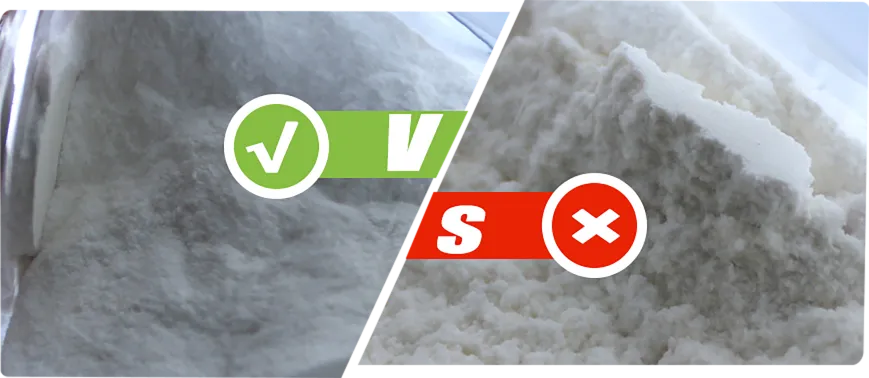
Dez . 31, 2024 10:38 Back to list
rdp polymer
Understanding RDP Polymer Its Properties, Applications, and Future
RDP polymer, or Redispersible Polymer Powder, is a crucial material in the fields of construction, adhesives, and coatings. As a hydrophobic powder that can rehydrate when mixed with water, RDPs play a vital role in enhancing the performance of various building materials. This article delves into the properties, applications, and future trends of RDP polymer, providing a comprehensive overview of its significance in modern industry.
Properties of RDP Polymer
RDP polymers are essentially powders made from thermoplastic resins that have been specifically designed to be redispersible. When combined with water, these powders quickly dissolve and form a polymeric film that offers several characteristics crucial for construction applications. Some of the key properties include
1. Improved Adhesion RDP polymers enhance the adhesive properties of mortars, adhesives, and thin-layer coatings, making them ideal for bonding materials such as tiles, bricks, and stones.
2. Flexibility and Elasticity The addition of RDP allows for flexibility in the final product, which is essential for applications requiring movement or slight expansion and contraction.
3. Water Resistance Once dried, RDP-based formulations exhibit excellent water resistance, preventing moisture-related issues, a critical factor in maintaining the longevity of construction projects.
4. Reduced Brittleness RDP helps in mitigating the brittleness of conventional mortars and adhesives, enhancing their durability and performance, particularly in varying environmental conditions.
5. Workability The use of RDPs improves the workability of construction materials, enabling easier application and manipulation on-site.
Applications of RDP Polymer
The versatility of RDP polymers permits their use in a wide range of applications
1. Cement-Based Products RDPs are prominently used in cement-based products like tile adhesive, skim coats, and self-leveling compounds. They improve bonding strength and enhance the overall performance of these materials.
rdp polymer

3. External Insulation and Finish Systems (EIFS) RDPs are integral to these systems, promoting better adhesion and flexibility, which help in insulation applications.
4. Construction Coatings In coatings, RDPs provide water resistance, adhesion, and flexibility, making them suitable for both interior and exterior applications.
5. Adhesives They play a critical role in formulating various adhesives, enhancing their performance across a broad spectrum of substrates.
Future Trends in RDP Polymer Development
As the construction industry evolves, so too does the demand for innovative materials such as RDP polymers. Several trends are shaping the future of RDP technology
1. Sustainability The construction industry is gradually shifting towards sustainable building materials. RDPs that incorporate recycled materials or reduce carbon footprints will likely gain traction. Manufacturers are exploring bio-based alternatives to traditional petroleum-derived polymers to align with eco-friendly practices.
2. Advanced Formulations Ongoing research is focused on developing RDPs with enhanced functionalities, such as self-healing properties, antimicrobial characteristics, and greater thermal resistance, to meet the demands of high-performance buildings.
3. Nanotechnology The incorporation of nanomaterials into RDP formulations could lead to significantly improved strength, durability, and functionality while maintaining lightweight characteristics. This innovation may revolutionize the construction industry, offering new possibilities for material efficiency.
4. Digitalization in Manufacturing The rise of smart manufacturing processes and digital monitoring technologies can streamline the production of RDP polymers, ensuring consistent quality and performance.
5. Regulatory Compliance As building codes and standards become more stringent regarding emissions and safety, RDP manufacturers must adapt their formulations and production practices to comply with these regulations, paving the way for safer and more environmentally responsible products.
Conclusion
RDP polymers represent a significant advancement in construction materials, offering enhanced properties that improve the performance and longevity of various applications. As the demand for sustainable and high-performance materials continues to grow, the focus on RDPs will likely expand, driving innovation and development within the industry. By understanding their properties and applications, stakeholders can leverage RDP technology to meet the challenges of modern construction and contribute to more sustainable building practices. The future of RDP polymers looks promising, with opportunities for growth, innovation, and a more responsible approach to construction.
-
The Widespread Application of Redispersible Powder in Construction and Building Materials
NewsMay.16,2025
-
The Widespread Application of Hpmc in the Detergent Industry
NewsMay.16,2025
-
The Main Applications of Hydroxyethyl Cellulose in Paints and Coatings
NewsMay.16,2025
-
Mortar Bonding Agent: the Key to Enhancing the Adhesion Between New and Old Mortar Layers and Between Mortar and Different Substrates
NewsMay.16,2025
-
HPMC: Application as a thickener and excipient
NewsMay.16,2025
-
Hec Cellulose Cellulose: Multi functional dispersants and high-efficiency thickeners
NewsMay.16,2025







